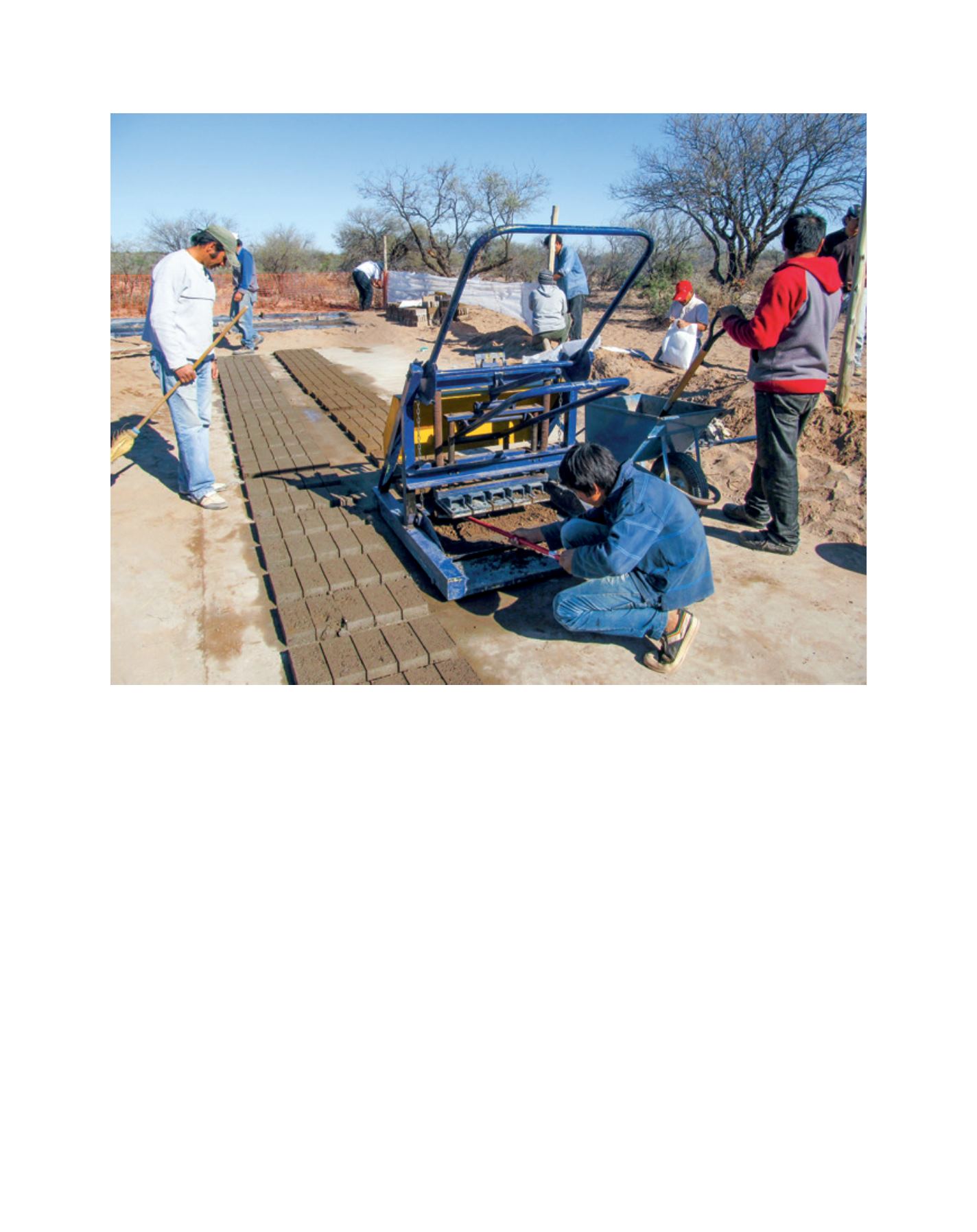

[
] 157
Image: IADIZA
The community manufactures ‘green’ (unfired) bricks with local materials for the construction of the DPU
perform are related to a subsistence economy destined for
self-consumption. These activities mostly include raising
small livestock for the production of meat and manure.
The climate is arid and precipitation ranges from 80-100
mm per year, which strongly affects productive activities.
The experience is focused on a small Huarpe community
called Pinkanta, of around 40 families. Eleven families in
this community formed the Kanay Ken cooperative with
the aim of participating with IADIZA and the Municipality
of Lavalle as beneficiaries of the project. The people expect
that the project will enable them to improve their quality of
life through productive diversification and improvement of
their fields, and to earn higher income and be able to rise
above the poverty line, taking on the challenge that the
desert can be productive and sustainable.
The proposal includes innovative traits in comparison with
the strategies implemented thus far in an area whose natural
resources have been devastated. It is based on acknowledging
the rural environment potential from a surmounting perspec-
tive of the assistance and compensatory approach. It is framed
within a conception of rural territory development that aims
at competitive and sustainable agriculture, articulating the
rural territory with dynamic markets. Its goals are to gener-
ate development strategies for the sustainable development
of rural indigenous communities in the desert, improve the
status of the ecosystem through an integral management of
natural and cultural resources, and promote improvement of
the socioeconomic conditions of dryland inhabitants. It takes
into account compatibilizing ecosystem regeneration with
investment in infrastructure and services, transformation and
diversification of productive activities, generation of employ-
ment and increase in revenue.
An interdisciplinary group of technicians and researchers
took part in the design of the proposal and the integrated
desertification assessment in the fields. The beneficiary
community participates in fieldwork and construction,
through their work and contribution of their knowledge,
land and livestock. This cooperative and the demonstrative
experience is a pilot case that can be replicated throughout
the territory, nucleating other scattered communities. In this
action the Municipality of Lavalle supports the development
of infrastructure, equipment and services such as roads, water
supply and materials.
A significant change would be encouraged by moving the
people above the poverty line, and reducing the pressure
of stocking rates would also promote improvement and
L
iving
L
and
















